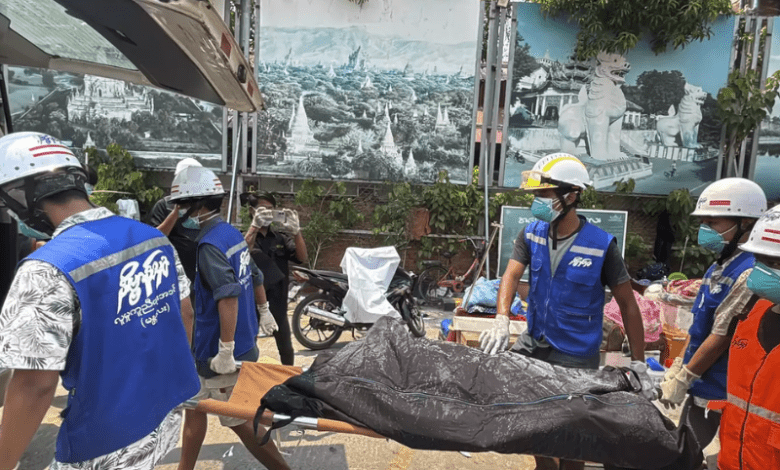How Are Heat and Rains Increasing Disease Risks in Myanmar Amid 3000 Earthquake Death Toll?

Myanmar is facing a two-fold catastrophe after a severe 7.7 magnitude earthquake struck last week, killing more than 3,000 people and injuring thousands more. Although rescue efforts continue, the humanitarian crisis is worsened by a heat wave and unseasonal rainfall, which experts warn will lead to widespread disease transmission among displaced people.
Health infrastructure is severely compromised, and many survivors are without clean water and sanitation. Aid organizations and experts around the world are raising alarms about the health risks.
Rising Temperatures and Waterborne Disease Risks:
Temperatures have reached as high as 38°C (100°F) and thousands of survivors of the earthquake are living in tents or camping outdoor,s who are afraid to go back into their damaged homes. The extreme heat together with the lack of fresh water encourages growth of deadly water borne diseases including cholera, dysentery and typhoid.
The World Health Organization (WHO) has identified increasing risk for cholera especially amongst areas such as Mandalay, Sagaing and Naypyitaw which recently experienced an outbreak last year. Contaminated drinking water and the loss of sanitary amenities could cause rapid spread of infection. WHO has committed $1 million now for emergency response including medical supplies and body bags for rapid response to a growing situation.
Unseasonal Rains and Mosquito-Borne Illnesses:
Adding to the dire situation, Myanmar’s meteorological department has warned of unseasonal rains from April 7th to April 11th in the hardest hit areas. These heavy downpours threaten to worsen the already unsanitary conditions in overcrowded camps. Which can lead to an increased risk of malaria, dengue fever and skin infections.
Diseases carried by mosquitoes such as dengue and malaria grow in areas of stagnant water which is going to be caused by the rains. It will be significantly challenging to treat and contain these outbreaks especially with main hospitals already destroyed in Mandalay and Naypyidaw ending up with limited health care capacities. Aid agencies are concerned that without proper aid, the combination of extreme heat and rain will lead to an even higher death toll.
Amidst these escalating challenges, relief efforts are impeded by Myanmar’s civil war. Although both the military junta and rebel factions had called for temporary ceasefires, sustainable humanitarian access to affected areas will determine whether and how long humanitarian assistance can take hold. The risk of a secondary emergency relating to outbreaks of disease is mounting for Myanmar in the absence of urgent medical assistance in addition to the challenges resulting from the earthquake.
